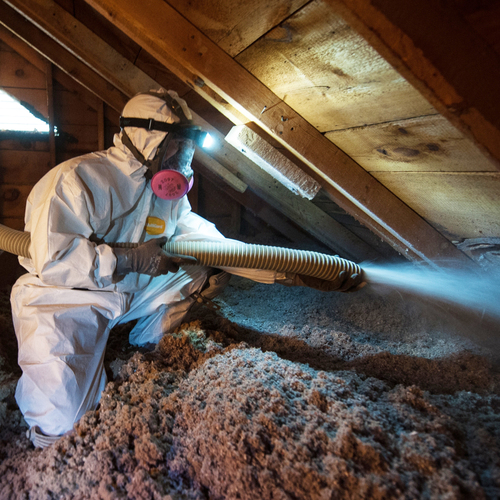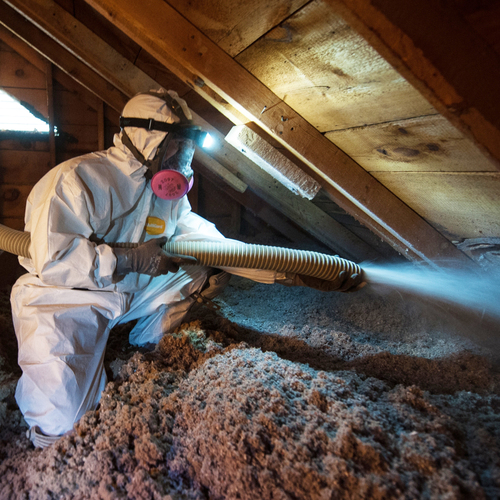
Many older homes are poorly insulated and leaky—not only in the U.S., but also in Europe. Here in the U.S., a federal program (the Weatherization Assistance Program, or WAP) has subsidized the weatherization of certain types of older homes for 45 years. Sponsored by the U.S. Department of Energy, the program pays for weatherization workers to perform air-sealing work, add insulation, seal leaky duct seams, and replace some types of inefficient appliances in the homes of low-income Americans. These services are provided at no charge to recipients.
The federal weatherization program is administered by state employees; in most states, however, the actual weatherization work is performed by local nonprofit groups known as community action agencies.
Over the years, the Weatherization Assistance Program has been widely hailed for its cost-effective approach to saving energy. The program has also been praised for easing the burdens of low-income families. On the other hand, the program has occasionally been derided for perceived inefficiencies or failures to achieve its professed cost-effectiveness goals. That said, the program has been supported for decades, with varying degrees of enthusiasm, by both Democratic and Republican administrations.
Weatherization may be one way to lower carbon emissions
In response to our current climate crisis, many legislators and activists advocate for greater investments in weatherization as one way to lower carbon emissions.
The premise is fairly simple: weatherized houses require less energy to heat and cool than poorly insulated houses, and lowering energy use is good for the planet. While this analysis appears simple and uncontroversial, the issue is more complicated than it first appears; at the end of this article, I’ll return to the question of the best ways to lower carbon emissions.
What’s going on in France
When it comes to addressing climate change, European…
Weekly Newsletter
Get building science and energy efficiency advice, plus special offers, in your inbox.

This article is only available to GBA Prime Members
Sign up for a free trial and get instant access to this article as well as GBA’s complete library of premium articles and construction details.
Start Free TrialAlready a member? Log in














6 Comments
Very interesting article. I am impressed with the dedication and commitment of the regulators in France and the protesters in the UK. Forgive me for being a bit negative, but compare that to what is going on here: the collapse of Build Back Better, Youngkin in Virginia pulling out of the regional gas partnership, the GOP forging well ahead in polling for '22 despite their near unified opposition to most climate related proposals, etc. It seems as though the issue has become a dividing line between the parties and at this point, the GOP is forging ahead...It sometimes seems that support for climate action in America is like the old saw about the Platte River: a mile wide, but only an inch deep. At the very least, at this point in our history there seems to be little willingness among Americans for sacrifice or inconvenience of any sort.
If we are in a "climate crisis" as you suggest, the solutions will need to come from a combination of technical, political and cultural advances. I am more confident of the technical advancements than I am of the rest.. I wonder if the larger Democrat run states and big corporations (e.g., the big financial institutions) will be able to continue to move the ball forward without much help from Congress. It will also be interesting to see whether European consumers will turn toward a more aggressive use of their purchasing power to boycott US companies to pressure US companies and politicians to do more. In the past these boycotts have had mixed results but they could pick up steam as the US falls further behind their EU counterparts.
I think the best way to sell weatherization is to focus on how much money it can save. The French program may look punitive, but any dwelling using 330 kwh per square meter per year, is costing someone a fortune. For a 150 square meter (around 1600 square feet) house, at 20¢ per kwh, it's almost $10,000. Any decent weatherization will cut that in half easily.
Agreed. This makes sense in older multi family units in our cities and towns. I am less confident regarding stand alone homes in much of the US, unless energy prices skyrocket from here. As an example, when home heating oil prices were $4 per gallon, I got an energy audit and estimates for air sealing/reinsulating my home. The pay back at that price stretched a long time and that was with relatively low cost of funds. Once interest rates (mortgage rates for those who must borrow funds, and rates of return for risk free investment income for those who pay cash) go up, the pay back period will extend even longer. So there will have to be some subsidies, and some of us are going to have to pay out of pocket without any expectation of actual savings.
Having said that, some investments may in fact pay out if the up front costs are pushed down a little. MY PV system is doing well, thanks in part to subsidies. However, there is no reason why community solar couldn't be a cost savings even if there are no subsidies, so long as they continue to bring the install costs down. Also, mini splits should cost no more than they cost in Asia-where install prices are a fraction of what they are here even in very high cost cities. If they become like commodities instead of giant HVAC projects, they could be deployed in big enough numbers to make a significant difference.
Are there standards (like France’s letter system) to grade how weatherized or efficient a house is?
(In kWh/sq foot/year)
Alan,
Over the years, many countries (including the U.S.) have developed scoring systems used to rate the energy efficiency of homes. Here in the U.S., the best known such system is probably the HERS Index. For more information on the HERS Index, see "How Is a Home’s HERS Index Calculated?"
The metric you propose -- annual kWh per square foot -- is really a calculation, not a scoring system. If you want to perform this calculation, you need to know all of your annual energy expenditures (for electricity, fuel oil, propane, natural gas, and firewood), and you need to convert each of these to kWh. Then divide the total kWh number by the number of square feet of your home's conditioned area.
For more information on converting various energy units to kWh, see this article: "Understanding Energy Units."
Just a quick thanks to Martin for this article, but also for all the other articles that end up crosslinked in the comments. If we wanted to know something about building science, turns out there's an article (or two, or three) for that.
The efforts of the GBA community are the antithesis of the "Bullshit Jobs" so eloquently defined by David Graeber (https://www.strike.coop/bullshit-jobs/). May the economic and political systems internalize this fact with all deliberate speed. Cheers to the weatherizers.
Log in or become a member to post a comment.
Sign up Log in